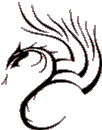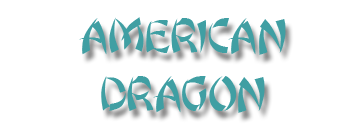INDIVIDUAL HERBS
| Pharmaceutical Latin: | Radix Stephaniae Tetrandrae |
| Common English: | Stephania Root Four Stamen Stephania Root |
Herbs that Drain Dampness (Diuretics)
Herbs that Dispel Wind-Damp and Relieve Pain (Anti-Rheumatics)
| Taste | Temperature | Entering Meridians | Dosage |
Bitter Acrid |
Cold |
Bladder Spleen Kidney (Lung) |
3-12g Tincture: 2-4ml |
| Actions | Indications/Syndromes |
Promotes urination and reduces edema especially in the lower body |
Edema due to Dampness accumulating in the Lower Jiao with damp leg Qi, borborygmus, abdominal distention, ascites |
Expels Wind-Dampness and alleviates pain (purges Damp-Heat) |
Wind-Damp-Heat collecting in the channels with fever, red, hot, swollen, painful joints (Wind-Damp-Heat Bi) Painful contractions of the hands and feet |
CONTRAINDICATIONS |
|
INCOMPATIBILITIES |
HERB/DRUG INTERACTIONS |
|
Hb. Lycopi
|
||
Edema in constitutionally weak patients. Swelling due to Leg Qi. |
Wind-Dampness invasion with Wei Qi Deficiency causing superficial edema, heaviness of the body, and sweating. |
Edema due to Blood Stagnation blocking the channels. Removes water, invigorates Blood and unblocks the collaterals for ascites, edema of the face and extremities and leg Qi. Postpartum edema. |
Rz. Gentianae |
Rx. Astragali Huang Qi |
|
Wind-Damp Bi. Wind-Damp-Heat Bi. |
Arthritis. |
Wind-Dampness with edema. Wind-Dampness with Exterior Deficiency. |
Rx. Gentiana |
Rx. Aconiti |
Sm. Zanthoxyli Bungeani |
Expels Lower Jiao Damp swellings with pain, while draining pathogenic Fire from the Bladder. |
Wind-Cold-Damp Bi. |
Dysuria and constipation due to water accumulation. |
- Some sources say that this herb strengthens Kidney function.
- Some sources, consider this herb to primarily a Wind-Damp dispelling herb.
- One source says that this herb clears Heat and dispels Blood Stasis.
- This herb is commonly used in the treatment of arthritis, especially of the knees. It is good for Damp-Heat in the Lower Jiao with knee inflammation.
- This herb affects the pituitary, adrenal, hypothalamic axis.
- This herb protects against pathogens.
- It expels exterior pathogenic Wind, eliminates Internal Damp-Heat and especially Lower Jiao Damp-Heat.
- It has become a standard remedy to treat neuralgia, hypertension, cardiac arrhythmia, immediate allergies and cancer.
- One source says that this herb cures buccal mucosal pain, hand pain, expels Phlegm and stops cough and asthma due to Lung Deficiency.
- This herb has been shown to inhibit the growth of and kill cancer cells.
- Rx. Aristolochiae Fangchi Guang Fang Ji is better at eliminating Wind and Dampness, while this herb is a stronger diuretic. Guang Fang Ji is more for upper body edema, while Han Fang Ji is more for lower body edema. If neither is specified, this herb is usually used.
- Both Han Fang Ji and Caulis Akebiae Mu Tong are very bitter and very cold and both descend to strongly clear Heat, facilitate the Fluid pathways and open the orifices. They are often used together to treat floating edema, urinary difficulty due to Damp-Heat and Wind-Damp Bi. Han Fang Ji is better at facilitating the removal of pathogenic water and expelling Wind and is best used for edema with abdominal distention, wheezing due to Phlegm and thin mucus, and Wind-Damp Bi. Mu Tong excels at clearing Fire from the Heart and Small Intestine channels and invigorating Blood. It is more appropriate for ulcers of the mouth and tongue, rough, painful urination due to overabundant Fire in the Heart and Small Intestine channels and amenorrhea due to Blood Stasis.
- Han Fang Ji has a solid, hard texture and was thought to mobilize the Lower Jiao and be superior for expelling Dampness, facilitating water and reducing swelling. It is most often used for Lower Jiao Damp-Heat, edema in the lower body and Damp leg Qi. The texture of Guang Fang Ji was thought to be as light as wood floating on water. Its lightness suggests that its actions move upward and outward to expel Wind, alleviate pain and treat edema in the upper body, as well as Wind-Damp Bi. Because of its toxic properties, it is no longer used.

